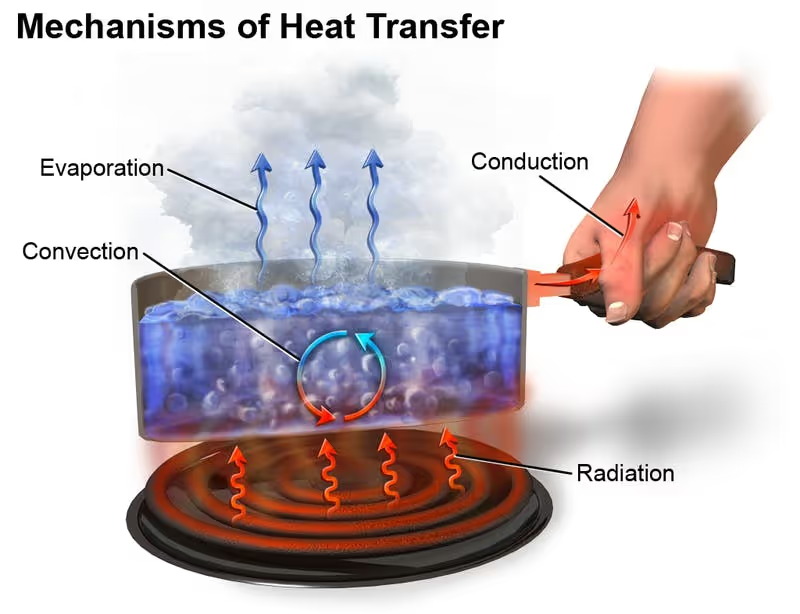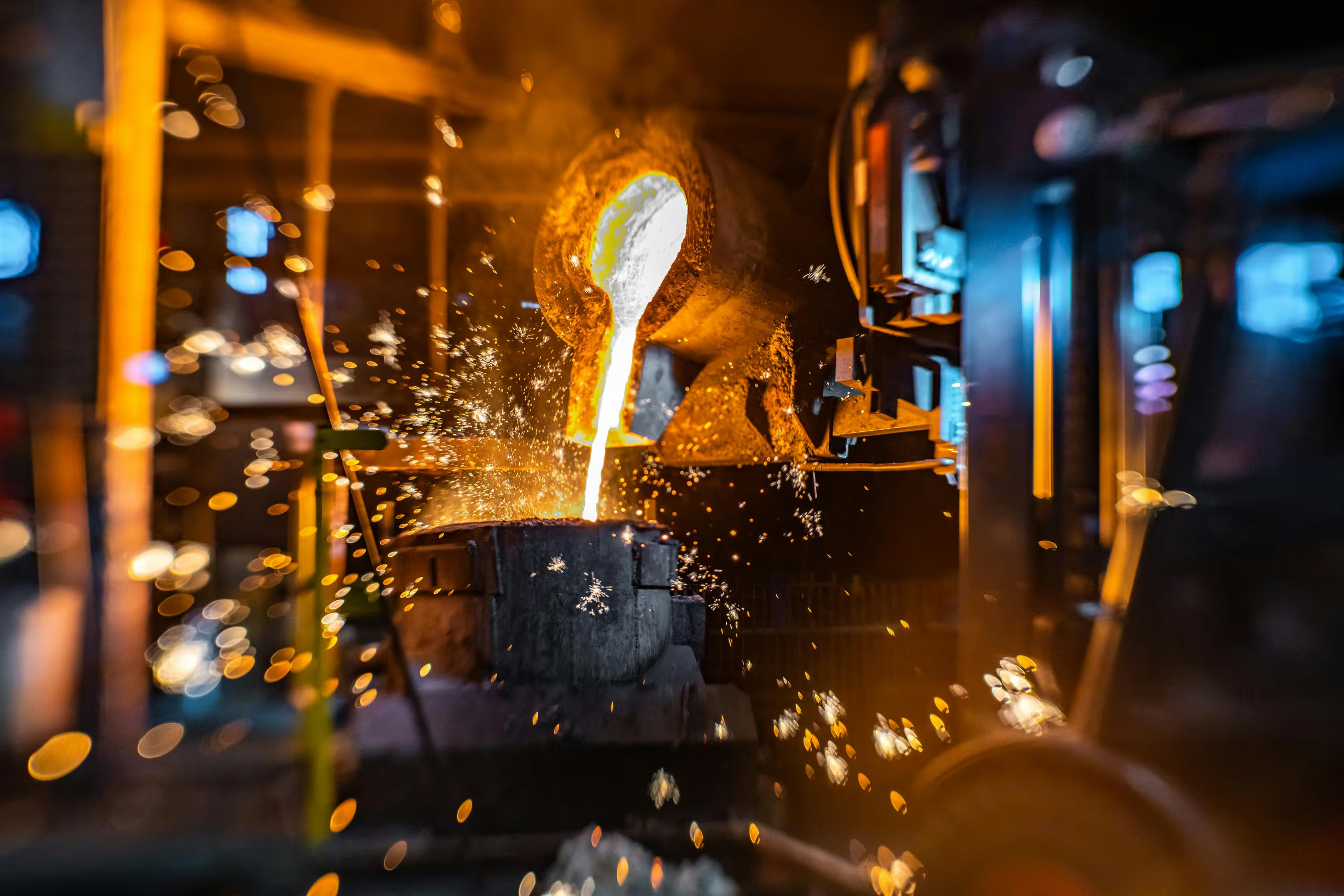
English (Global)
Article
Types of Heat Transfer – Differences and Recommendations
Discover different heat transfer types and the relevance of thermal insulation for optimizing energy efficiency in your industrial applications.
By Christian Tavira
Manager of Application Engineering & Technical Support – NUTEC
Effective heat transfer control is vital in many industrial applications that require thermal insulation. Therefore, understanding the roots of this phenomenon is the starting point for properly selecting and designing insulation solutions.
Discover the different types of heat transfer and the relevance of thermal insulation applications in this article.
The Fundamentals of Heat Transfer
Heat transfer can be defined as the process of exchange of thermal energy between two bodies or systems. If these are at different temperatures, a heat exchange occurs until a thermal equilibrium is achieved. That is a point at which temperatures equalize.
This phenomenon is closely related to heat leaks, understood as an unwanted transfer from a warmer area to a cooler one. It is important to consider that each body or system has a tendency to conduct heat to a greater or lesser extent. This is known as thermal conductivity.
Insulation solutions, therefore, form a barrier that minimizes heat transfer to the outside. In addition, insulation allows you to maintain the appropriate temperature within an industrial process, thanks to its low conductivity and heat resistance.
What are the Different Types of Heat Transfer?
There are three main types of heat transfer: conduction, radiation, and convection.
- Thermal conduction occurs when heat is transferred through a solid material or between materials in contact.
- Thermal radiation, on the other hand, is based on the emission of energy in the form of electromagnetic waves from a hot body to a colder one.
- Lastly, thermal convection involves the transfer of heat through the movement of a fluid, either liquid or gas.
You can discover more about these transfer mechanisms below.

1. Conduction
Conduction is the process of heat transfer through a solid material or materials in direct contact with one another. It is based on thermal energy transfer from particle to particle within the material.
There must be a temperature difference across the material for this to occur. Some examples of thermal conduction include the flow of heat through a metal bar or direct contact between two objects, such as a pan on the stove.
In industrial applications, thermal conduction also plays a fundamental role in industrial furnaces. This process is essential for distributing heat evenly throughout a furnace interior, ensuring efficient and consistent heating of the processed materials.
The insulating materials used in the construction of industrial furnaces are designed to have specific thermal conductivity properties that allow them to withstand high temperatures and maintain a controlled thermal environment inside the furnace.
Industrial furnaces and kilns are essential for manufacturing processes that require high temperatures, such as metal smelting, firing of ceramics, or glassmaking.
2. Radiation
Thermal radiation occurs when heat is transferred in electromagnetic waves without a propagation material. It is a process that occurs even in a vacuum. Heat is emitted from a warm body to a colder body through radiation.
Some examples of thermal radiation are the heat received from the sun, the sterilization process of containers in the food industry, or the heating process of industrial foundry furnaces.
Industrial furnaces utilize thermal radiation to achieve high temperatures and thereby melt metals or other materials, a fundamental process in producing a wide range of products.
3. Convection
Thermal convection involves the transfer of heat through the movement of a fluid, either liquid or gas. It can be classified into two types: natural convection and forced convection.
- Natural convection occurs when fluid moves due to density differences caused by temperature variations.
- Forced convection occurs when an external source, such as a fan or vehicle radiator, is used to move fluid in a controlled manner.
Forced convection is widely used in various industries and applications, such as industrial furnaces, as it is an efficient form of heat transfer and allows precise control over temperature conditions.
NUTEC Bickley, our sister company, offers customized industrial heating solutions for multiple industries.
Learn more about NUTEC Bickley, a leader in manufacturing highly specialized industrial furnaces.
Efficient Thermal Insulation

Achieving efficient thermal insulation involves taking into consideration the different types of heat transfer and their synergy. Depending on the specific needs of an application, it may be necessary to control the conduction, the radiation, or the convection individually, or in combination.
There are various materials and technologies designed to control heat transfer in industrial environments. Having a good understanding of this topic allows you to determine the most appropriate type of thermal insulation for each situation.
Also, factors such as thermal conductivity, heat resistance, durability, and energy efficiency must be considered when choosing a thermal insulator.
Advances and Trends in Heat Transfer and Thermal Insulation
The field of heat transfer and thermal insulation is constantly evolving, driven by the search for more efficient and sustainable solutions.
From the R&D department's standpoint, the latest technologies focus on reducing thermal conductivity while increasing the heat resistance and durability of thermal insulation solutions.
Another important factor is the rise of simulation systems and computational modeling. By increasing the collection of files and functions, they are the most useful resource for detecting and treating heat leaks, even from mapping the process. Our Heat Flow Program is an instantly available tool for energy calculations.
Finally, automatic measurement systems guarantee energy efficiency and offer a real-time reading of the industrial process.
However, beyond considering the novelties in developing solutions, it is critical to consider a series of best practices for all industries.
Recommendations and Best Practices
The following recommendations can help optimize the performance of thermal insulation to manage the various types of heat transfer in each application:
- Understand the industrial process in depth. This can only be achieved by working side by side with the client. Knowing the maximum temperature involved in the material to be processed is vital. With this information, the team of experts can generate the respective analyses.
- Consider storage and installation details. Once the insulating solution is chosen, it is important to consider aspects that can sometimes be taken for granted, such as fully complying with the storage and installation manual.
- Carry out periodic inspections. Appropriate preventive and predictive maintenance ensures the integrity and performance of thermal insulation. This directly affects the control of the process and the quality of the final product.
- Stay updated. Keeping up to date with insulation or thermal management innovations is necessary for properly evaluating the industrial process.
Conclusion
The different types of heat transfer play a crucial role in thermal insulation efficiency in various industrial applications. Thermal conduction, radiation, and convection represent the starting point for the selection and design of effective thermal insulation solutions.
Once the appropriate selection has been made, good practices must be followed to contribute to energy efficiency and to reduce the costs associated with heat transfer in industrial applications.
About NUTEC
With nearly 50 years of experience as a leader in thermal insulation solutions, NUTEC transforms the thermal insulation industry through cutting-edge engineering.
Some success stories in:
Want to know more?
At NUTEC, we are committed to providing you with valuable content that helps you make informed decisions for your business. Thank you for taking the time to read this entry and we hope it provided you with insights that you can apply to your operations.
If you have any questions or would like to learn more about our products, please don’t hesitate to contact us.
To get in touch, simply fill out the form, and one of our experts will get back to you as soon as possible.
© NUTEC Incorporated 2025



